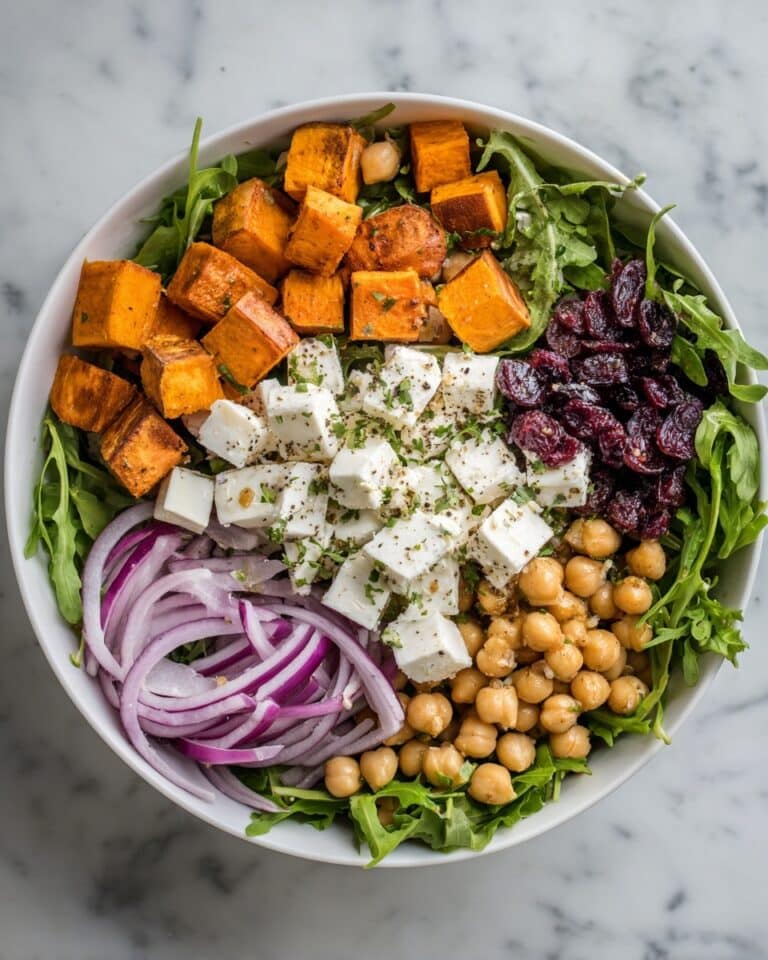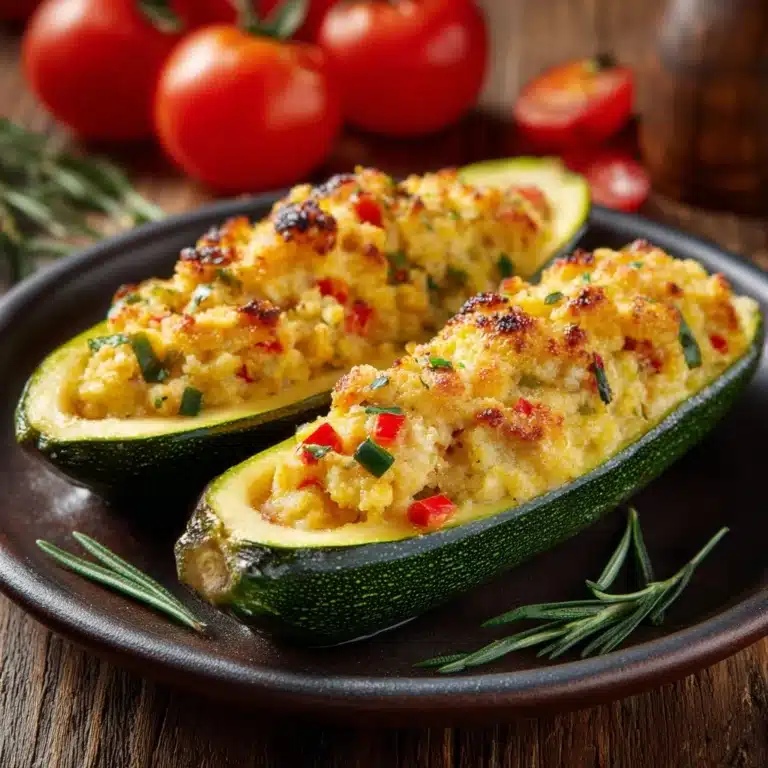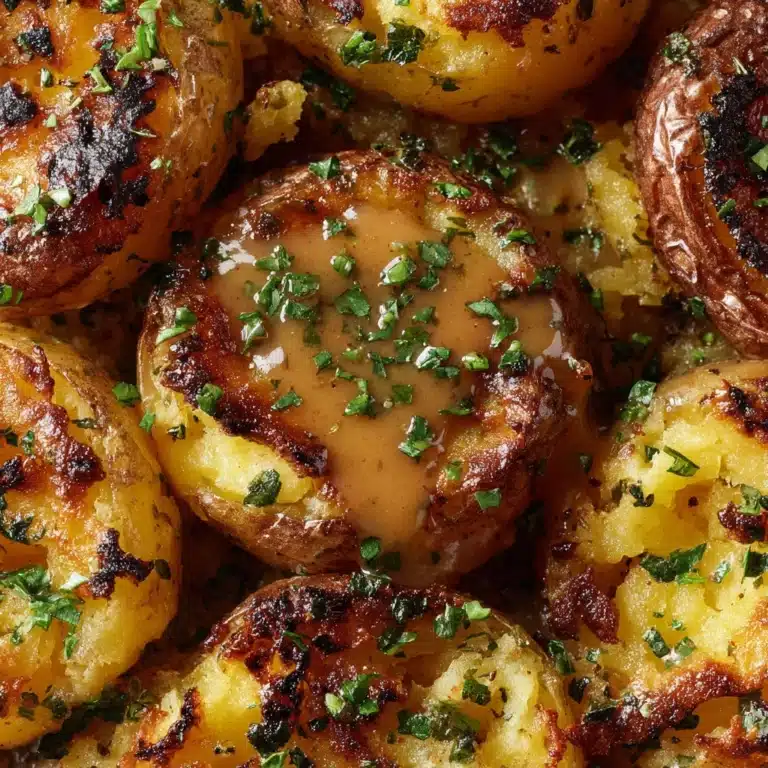Lemon Caper Sauce Recipe
If you love bright, tangy flavors that transform an everyday meal into something extraordinary, Lemon Caper Sauce is about to become your new go-to. Bursting with citrusy zest, briny pops of capers, and a silky butter base, this Mediterranean-inspired sauce is the kind of secret weapon you’ll want to pour over everything from chicken to vegetables. In just minutes, you can whisk up this restaurant-quality finishing touch, adding a punch of flavor and an inviting aroma to your favorite dishes. Let’s dive in and discover just how effortless—and delicious—this sauce can be.
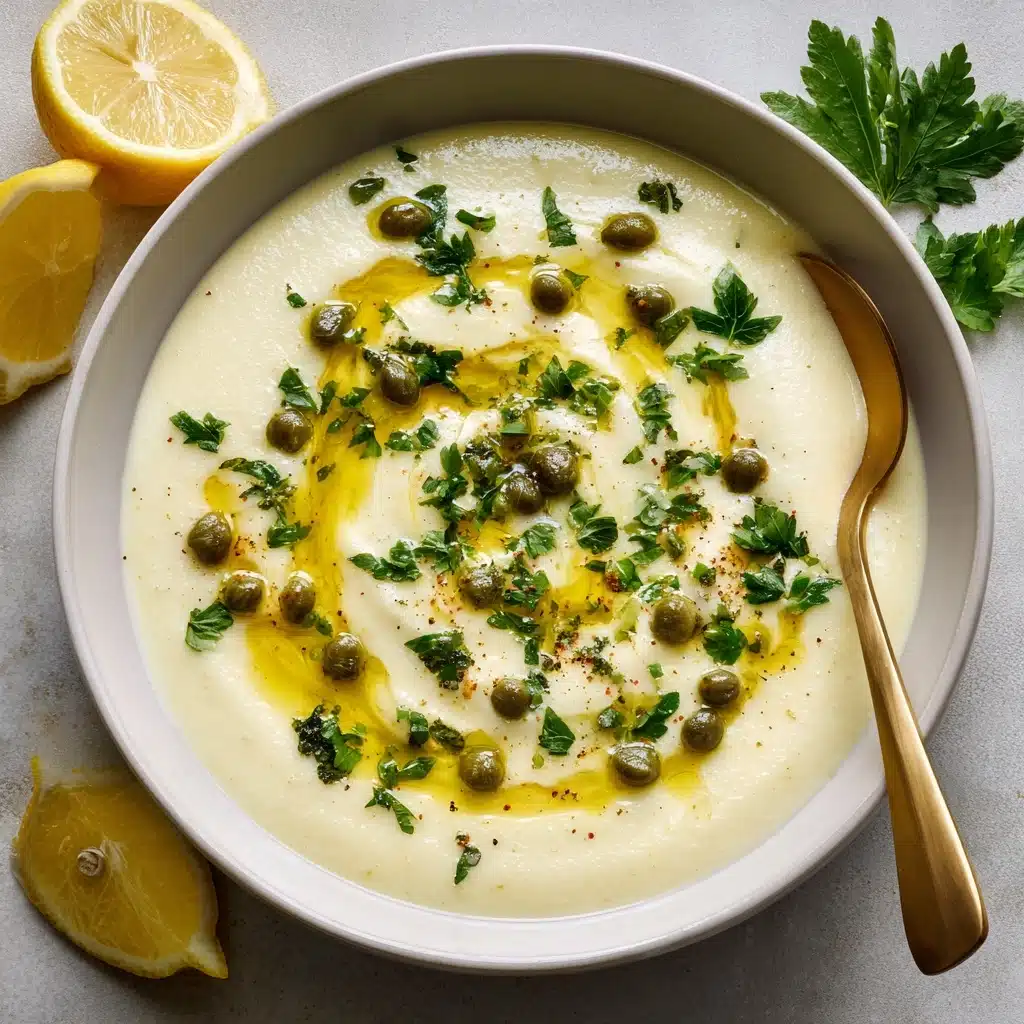
Ingredients You’ll Need
The ingredient list for Lemon Caper Sauce is delightfully short, yet every single item plays a crucial role. These staples come together to provide balance: richness, brightness, subtle acidity, and a hint of savory freshness. Here’s what you’ll need, plus a few tips to make each one sing.
- Unsalted butter (2 tablespoons): Adds the luxurious, creamy base and lets you control the saltiness of the final sauce.
- Olive oil (1 tablespoon): Blending butter with oil keeps the sauce from burning and layers in more Mediterranean character.
- Garlic, minced (2 cloves): Just a little bit infuses the sauce with aromatic depth—don’t let it brown!
- Chicken broth or vegetable broth (1/2 cup): This is your savory backbone and helps with the consistency—go for low-sodium if possible.
- Fresh lemon juice (2 tablespoons): The heart of the sauce, giving that signature tangy pop.
- Lemon zest (1 teaspoon): Adds extra brightness and a subtle, floral essence.
- Capers, drained and rinsed (2 tablespoons): The briny secret that gives Lemon Caper Sauce its bold personality.
- Salt and black pepper (to taste): Season at the end, tasting so you don’t overpower the other flavors.
- Fresh parsley, chopped (1 tablespoon, optional): For a fresh, vibrant finish and a pop of color.
How to Make Lemon Caper Sauce
Step 1: Melt Butter and Oil
In a small skillet or saucepan over medium heat, add the butter and olive oil together. Let the butter melt completely, swirling the pan so the fats combine evenly. This not only forms the luxurious base but prevents any bitterness by keeping the butter from scorching.
Step 2: Sauté Garlic
Add the minced garlic and sauté for about 1 to 2 minutes. Keep a close eye—it should become fragrant and very lightly golden. Don’t rush this or let the garlic brown; the goal is to flavor the fat and release all that wonderful aroma without any bitterness.
Step 3: Add Broth
Pour in your chicken or vegetable broth and crank the heat up slightly. This immediately brings all the flavors together and gives the sauce its pourable texture. Let it come to a simmer, which draws maximum flavor from the aromatics and starts reducing the sauce a bit.
Step 4: Mix in Lemon and Capers
With the broth gently bubbling, stir in the lemon juice, lemon zest, and those glorious capers. It should instantly smell crisp and briny. Simmer everything together for three to five minutes, reducing slightly to intensify the flavor and help the sauce cling perfectly to whatever you’re serving.
Step 5: Season and Finish
Taste the sauce and adjust with a pinch of salt and black pepper. If you love a hit of freshness, now’s the time to stir in chopped fresh parsley. Your Lemon Caper Sauce is ready—serve it right away while it’s warm and glossy for maximum impact.
How to Serve Lemon Caper Sauce
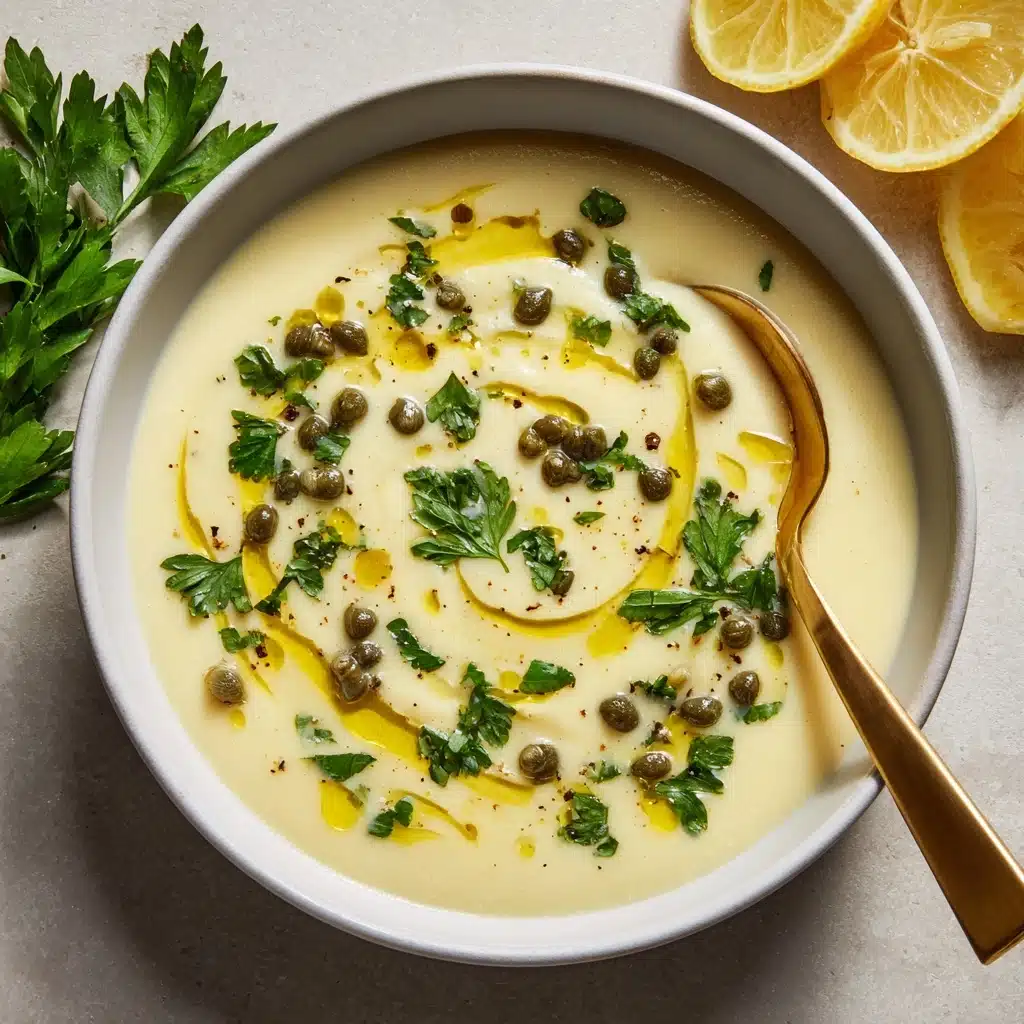
Garnishes
A sprinkle of fresh parsley immediately before serving isn’t just for looks—it adds a light, herbal note that contrasts beautifully with the sauce’s tang. Try a few extra capers on top for that bistro-quality finish. A twist of lemon zest can also make each plate look extra special and inviting.
Side Dishes
Lemon Caper Sauce loves classic pairings: pour it over grilled or pan-seared chicken, flaky white fish, juicy shrimp, or even roasted vegetables like asparagus or green beans. It’s also an unexpected treat alongside creamy mashed potatoes or soft, buttery orzo pasta—don’t forget some crusty bread to mop up every last drop!
Creative Ways to Present
Think beyond the usual! Drizzle Lemon Caper Sauce over grilled tofu or baked tofu steaks for a vegetarian twist, spoon it onto steamed artichoke halves, or toss it with spaghetti for a quick, zesty pasta dish. For an appetizer, use it as a dip for roasted potatoes or as a drizzle on crostini topped with smoked salmon. Its bright flavor inspires creativity in every course.
Make Ahead and Storage
Storing Leftovers
If you have any Lemon Caper Sauce left, let it cool completely before transferring to an airtight container. Stored in the refrigerator, it keeps well for up to four days. The flavors often meld and become even more harmonious after a short rest!
Freezing
While this sauce is best fresh, you can freeze Lemon Caper Sauce for up to one month. Let it cool and pour into a freezer-safe container, leaving a little space for expansion. Thaw overnight in the fridge before reheating and give it a good stir to bring it back together.
Reheating
Gently warm the sauce in a small saucepan over low heat, stirring constantly to restore its glossy finish. If it seems a little thick, add a splash of broth or water to loosen it. Avoid high heat, as that can break the delicate emulsion and affect the texture.
FAQs
Can I use bottled lemon juice instead of fresh?
Fresh lemon juice is always best for Lemon Caper Sauce, as it gives the brightest, cleanest flavor. Bottled juice will work in a pinch, but it often tastes less vibrant and slightly metallic.
What protein does Lemon Caper Sauce pair with best?
This sauce is particularly wonderful with chicken (think piccata), fish like salmon or cod, shrimp, or even thin pork cutlets. Its zesty, slightly briny profile works beautifully with just about any mild protein that loves some extra brightness.
How can I make a vegan version?
Simply swap the butter for a good vegan butter, use olive oil, and make sure to use vegetable broth. The sauce still comes out beautifully silky and flavorful—perfect for plant-based meals.
Can I make this Lemon Caper Sauce in advance?
Absolutely! You can cook it a day or two ahead and reheat gently before serving. Just wait to add the fresh parsley until right before serving so its flavor stays bright.
Is it possible to make the sauce creamier?
Yes, for a richer, creamier sauce, just stir in two tablespoons of heavy cream at the very end of cooking. This thickens the sauce and gives it a lovely velvety texture without overpowering the lemony punch.
Final Thoughts
If zesty, bold, yet balanced flavors are your thing, you have to try making this Lemon Caper Sauce at home. It’s the little burst of sunshine your meals have been missing, and I just know it’ll find a permanent spot in your kitchen lineup. Give it a try—you’re going to be amazed at all the delicious ways you can use it!
Print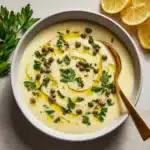
Lemon Caper Sauce Recipe
- Total Time: 13 minutes
- Yield: 4 servings 1x
- Diet: Non-Vegetarian
Description
A zesty and versatile Lemon Caper Sauce that adds a burst of flavor to a variety of dishes. This tangy sauce is perfect for drizzling over chicken, fish, pasta, or vegetables.
Ingredients
Ingredients:
- 2 tablespoons unsalted butter
- 1 tablespoon olive oil
- 2 cloves garlic, minced
- 1/2 cup chicken broth (or vegetable broth)
- 2 tablespoons fresh lemon juice
- 1 teaspoon lemon zest
- 2 tablespoons capers, drained and rinsed
- Salt and black pepper to taste
- 1 tablespoon chopped fresh parsley (optional)
Instructions
- Heat Fats: In a skillet, melt butter and olive oil over medium heat.
- Sauté Garlic: Add minced garlic and sauté until fragrant.
- Add Broth: Pour in chicken broth and simmer.
- Introduce Flavors: Stir in lemon juice, zest, and capers; simmer to reduce.
- Season: Season with salt and pepper.
- Finish: Stir in parsley before serving.
Notes
- For a creamier version, add 2 tablespoons of heavy cream at the end.
- Pair with chicken piccata, grilled salmon, or steamed asparagus.
- Prep Time: 5 minutes
- Cook Time: 8 minutes
- Category: Sauce
- Method: Stovetop
- Cuisine: Mediterranean
Nutrition
- Serving Size: 2 tablespoons
- Calories: 90
- Sugar: 0g
- Sodium: 300mg
- Fat: 9g
- Saturated Fat: 4g
- Unsaturated Fat: 5g
- Trans Fat: 0g
- Carbohydrates: 1g
- Fiber: 0g
- Protein: 1g
- Cholesterol: 15mg



